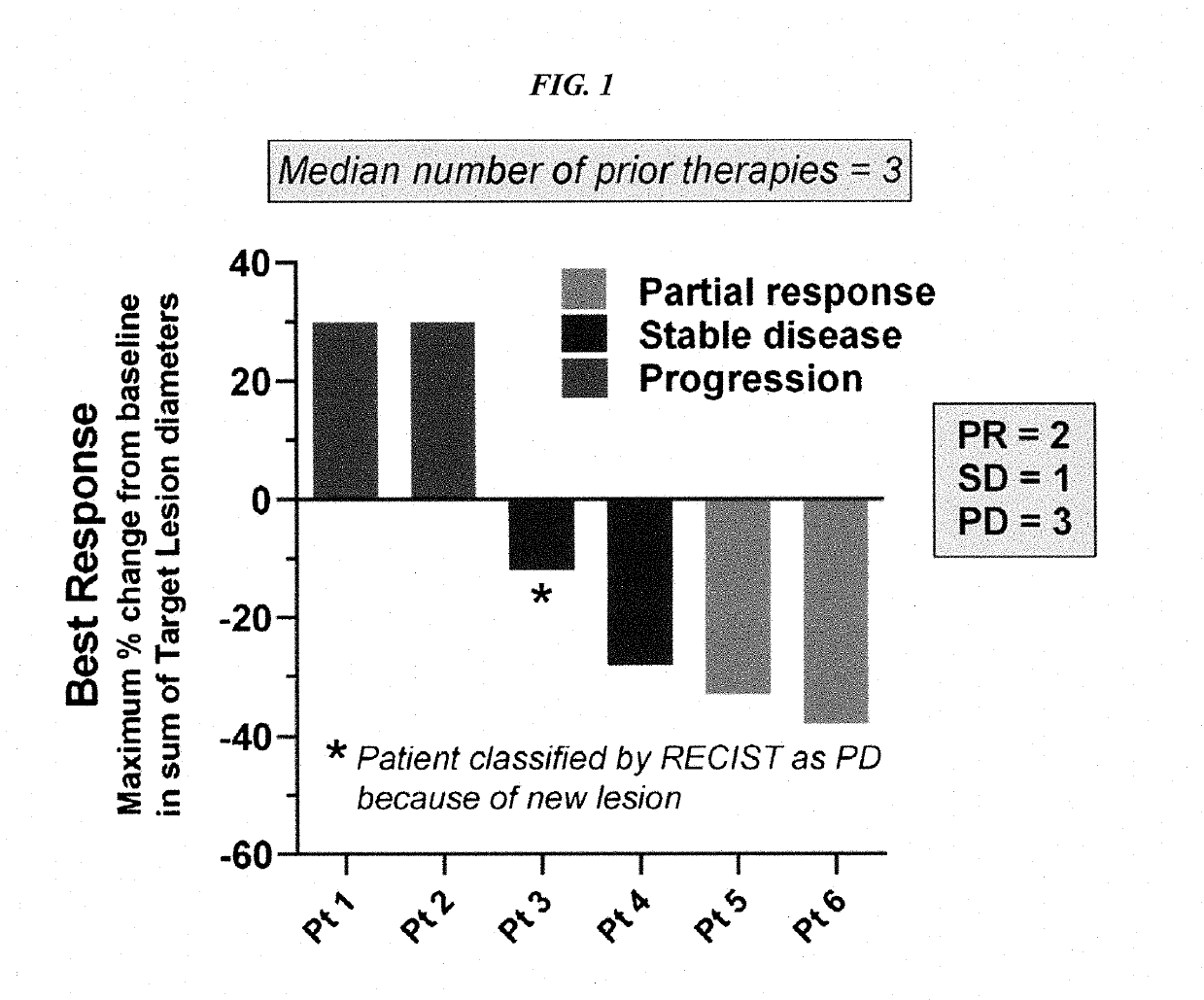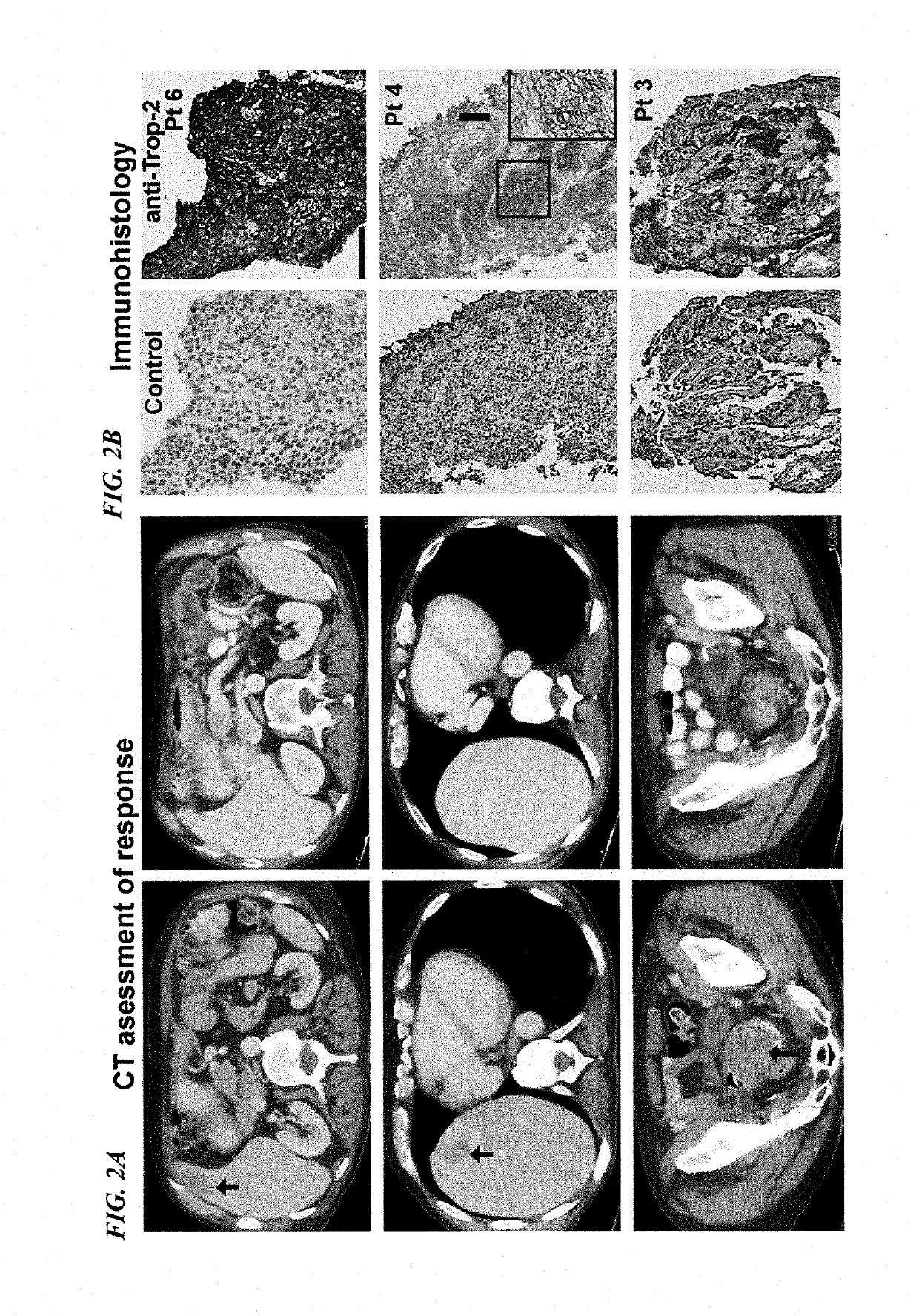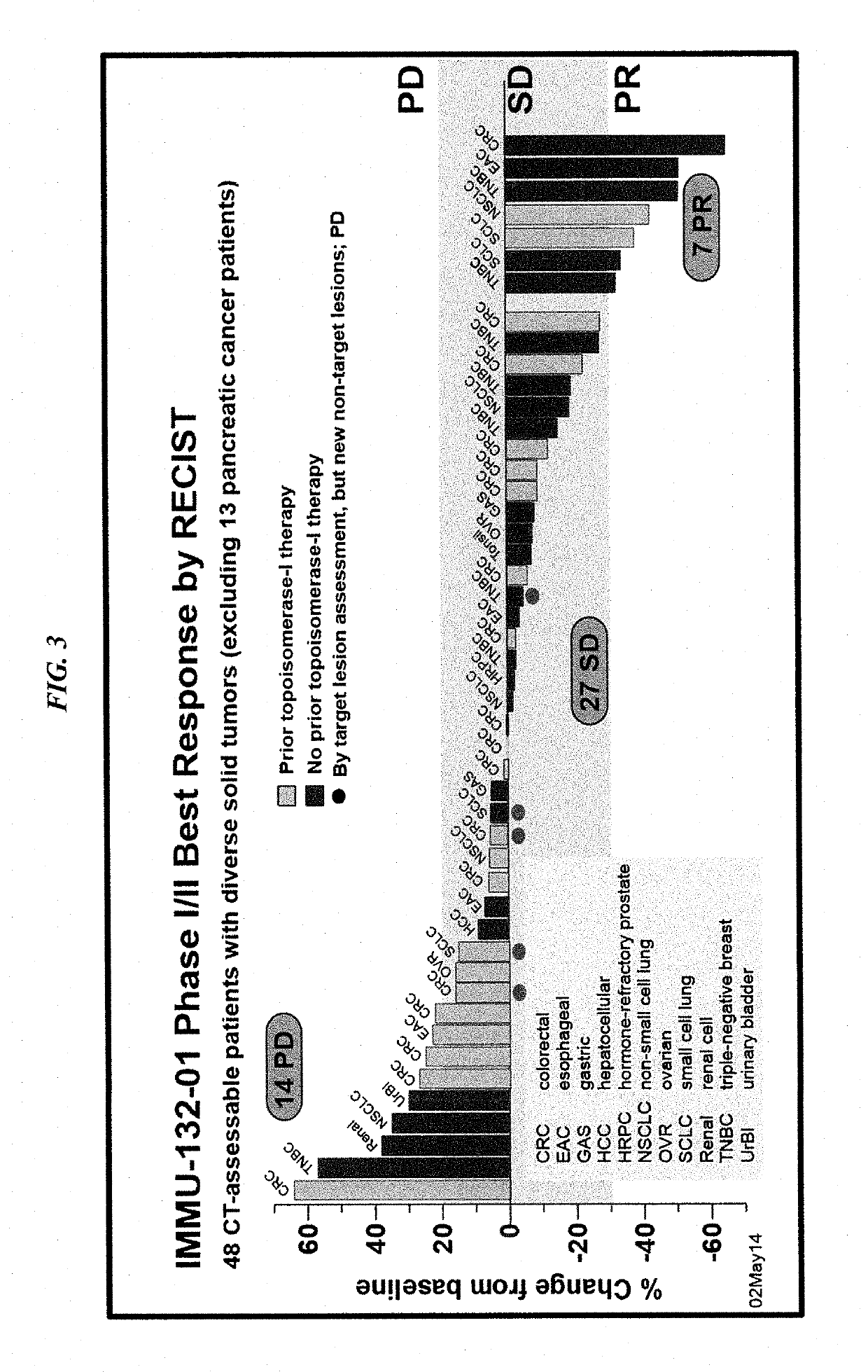Therapy for metastatic urothelial cancer with the antibody-drug conjugate, sacituzumab govitecan (IMMU-132)
a metastatic urothelial cancer and antibody-drug technology, applied in the field of immunoconjugate therapy, can solve the problems of reducing immunogenicity, achieve the effect of reducing the number of courses of therapy required, reducing certain severe side effects, and unexpected synergistic effects
- Summary
- Abstract
- Description
- Claims
- Application Information
AI Technical Summary
Benefits of technology
Problems solved by technology
Method used
Image
Examples
example 1
Clinical Trial of Sacituzumab Govitecan (IMMU-132) for Metastatic Urothelial Cancer
[0171]Patients with metastatic, platinum-resistant urothelial carcinoma (PRUC) have no FDA-approved therapies. The response rates to second-line chemotherapy have generally been <20%, with a median overall survival of <1 year. We report herein our experience with 6 heavily pretreated patients with advanced PRUC (ClinicalTrials identifier NCT01631552) with the novel antibody-drug conjugate, sacituzumab govitecan (IMMU-132). This antibody-drug conjugate comprises the active metabolite of irinotecan, SN-38, conjugated to an anti-Trop-2 antibody (hRS7).
[0172]Trop-2 is widely expressed in ≤83% of urothelial carcinomas. Of the 6 patients, 3 had a clinically significant response (progression-free survival, 6.7 to 8.2 months; overall survival, 7.5+ to 11.4+ months). Sacituzumab govitecan was well tolerated. Because of these results, a phase II trial has been initiated. The present report demonstrates the util...
example 2
Further Studies on IMMU-132 in Metastatic Urothelial Cancer
[0187]Following Example 1, further studies were performed in patients with mUC pre-treated with platinum-containing chemotherapy. Such patients have limited therapeutic options, with checkpoint-inhibitor immunotherapy (IO) responses in a minority of patients. We provide further evidence of the safety and activity of sacituzumab govitecan (IMMU-132) as therapy for chemotherapy-pretreated mUC pts (ClinicalTrials.gov, NCT01631552).
[0188]Method
[0189]We enrolled 32 pts with mUC and ECOG PS 0-1 who failed ≥1 prior standard therapy (median=3; range, 1-5). IMMU-132 was administered at 8 or 10 mg / kg on days 1 and 8 every 21 days, continued until disease progression (PD) or unacceptable toxicity. Response-evaluable pts received ≥2 doses, and had ≥1 post-baseline response assessment.
[0190]Results
[0191]Twenty-five pts [median age 68 yrs (range: 50-91), 24 males] were assessable for safety and response; 23 had prior platinum-containing t...
example 3
Clinical Trials with IMMU-132 Anti-Trop-2 ADC in a Variety of Trop-2+ Cancers
[0194]Summary
[0195]The present Example reports results from a phase I clinical trial and ongoing phase II extension with IMMU-132, an ADC of the internalizing, humanized, hRS7 anti-Trop-2 antibody conjugated by a pH-sensitive linker to SN-38 (mean drug-antibody ratio=7.6). Trop-2 is a type I transmembrane, calcium-transducing, protein expressed at high density (˜1×105), frequency, and specificity by many human carcinomas, with limited normal tissue expression. Preclinical studies in nude mice bearing Capan-1 human pancreatic tumor xenografts have revealed IMMU-132 is capable of delivering as much as 120-fold more SN-38 to tumor than derived from a maximally tolerated irinotecan therapy.
[0196]The results shown were obtained during the course of an initial Phase I trial of 25 patients who had failed multiple prior therapies (some including topoisomerase-I / II inhibiting drugs), and an ongoing Phase II extensio...
PUM
| Property | Measurement | Unit |
|---|---|---|
| pH | aaaaa | aaaaa |
| pH | aaaaa | aaaaa |
| shrinkage | aaaaa | aaaaa |
Abstract
Description
Claims
Application Information
 Login to View More
Login to View More - R&D
- Intellectual Property
- Life Sciences
- Materials
- Tech Scout
- Unparalleled Data Quality
- Higher Quality Content
- 60% Fewer Hallucinations
Browse by: Latest US Patents, China's latest patents, Technical Efficacy Thesaurus, Application Domain, Technology Topic, Popular Technical Reports.
© 2025 PatSnap. All rights reserved.Legal|Privacy policy|Modern Slavery Act Transparency Statement|Sitemap|About US| Contact US: help@patsnap.com



